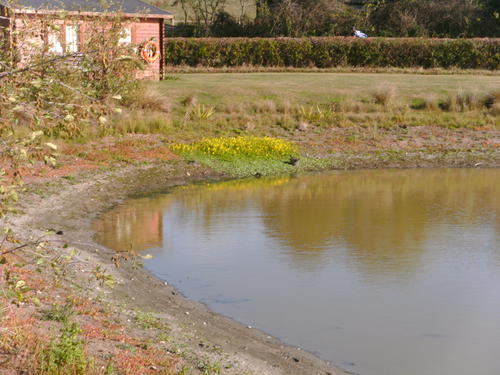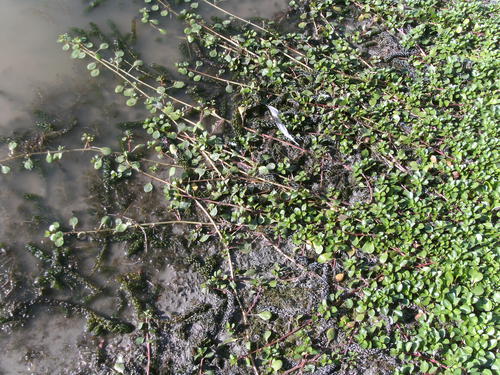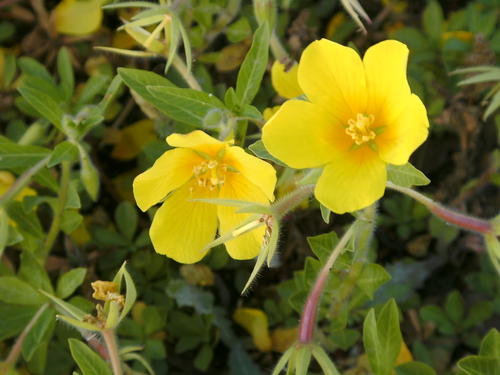Water-primrose – an unwelcome arrival
Bert Reid
I was recently doing some plant recording near Bishampton when I noticed a plant that I did not recognise growing on the edge of a large pool (Fig. 1.). It was a large patch of a creeping, yellow flowered plant on the marginal mud of the pond with long trailing non-flowering stems reaching into the water (Fig. 2.). The structure of the flower (Fig. 3.) showed it to be in the Onagraceae, the Willowherb family, and the genus keyed out to Ludwigia (Hampshire-purslanes). The only plant with obvious yellow flowers and alternate leaves mentioned in the most recent British flora (Stace 2010) is Ludwigia grandiflora, the Water-primrose. This is recorded as an established aquarists’ throw-out in ponds in Surrey and South. Hampshire.
Further information from the internet raised both concerns and questions. The concerns appeared from DEFRA’s Non-Native Species Secretariat (NNSS), where Water-primrose is included as a red alert species where they ask for all sighting in the UK to be reported. The plant has become a serious pest in parts of Europe, especially France, where it has spread rapidly, choking waterways, increasing flood risk and crowding out native species. The Environment Agency is attempting to eradicate the plant in all known sites. I have reported my sighting, the first from Worcestershire and about the 18th in the UK since the first record in 1999.
The questions concern the exact identity of the plant. It appears that France has more than one species, and the Water-primrose site on the NNSS website includes Ludwigia grandiflora, L. peploides and L. hexapetala. A very recent reprint of Stace (2010) 3rd edition changes L. grandiflora to L. hexapetala. The botany section of the Smithsonia Institute website has a section on Ludwigia with about 90 taxa fully described including 14 in section Oligospermum. The three species noted in Europe are all in this section, but seem to mainly differ from each other in chromosome numbers. Not for certain field identification!
So we may find that our only Worcestershire record for this attractive and interesting water plant may be quickly eradicated without even being definitively identified!
Reference
Stace, C. 2010. New Flora of the British Isles. Third edition. Cambridge University Press, Cambridge.
Images
Fig. 1. Bishampton pool with Water-primrose. Bert Reid.
Fig. 2. Water-primrose trailing stems. Bert Reid.
Fig. 3. Water-primrose flowers. Bert Reid


